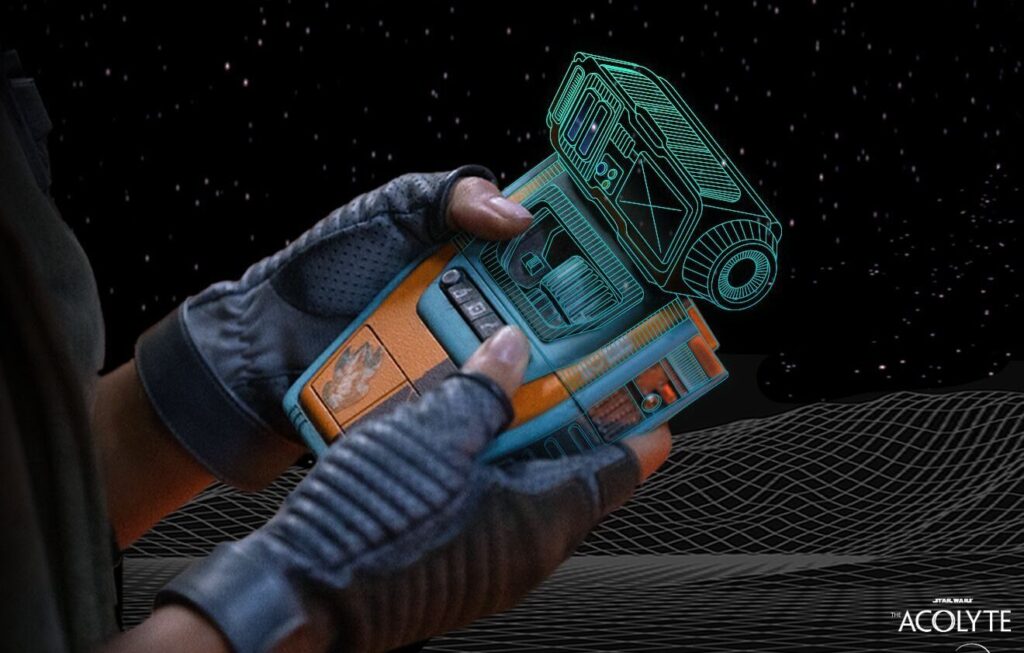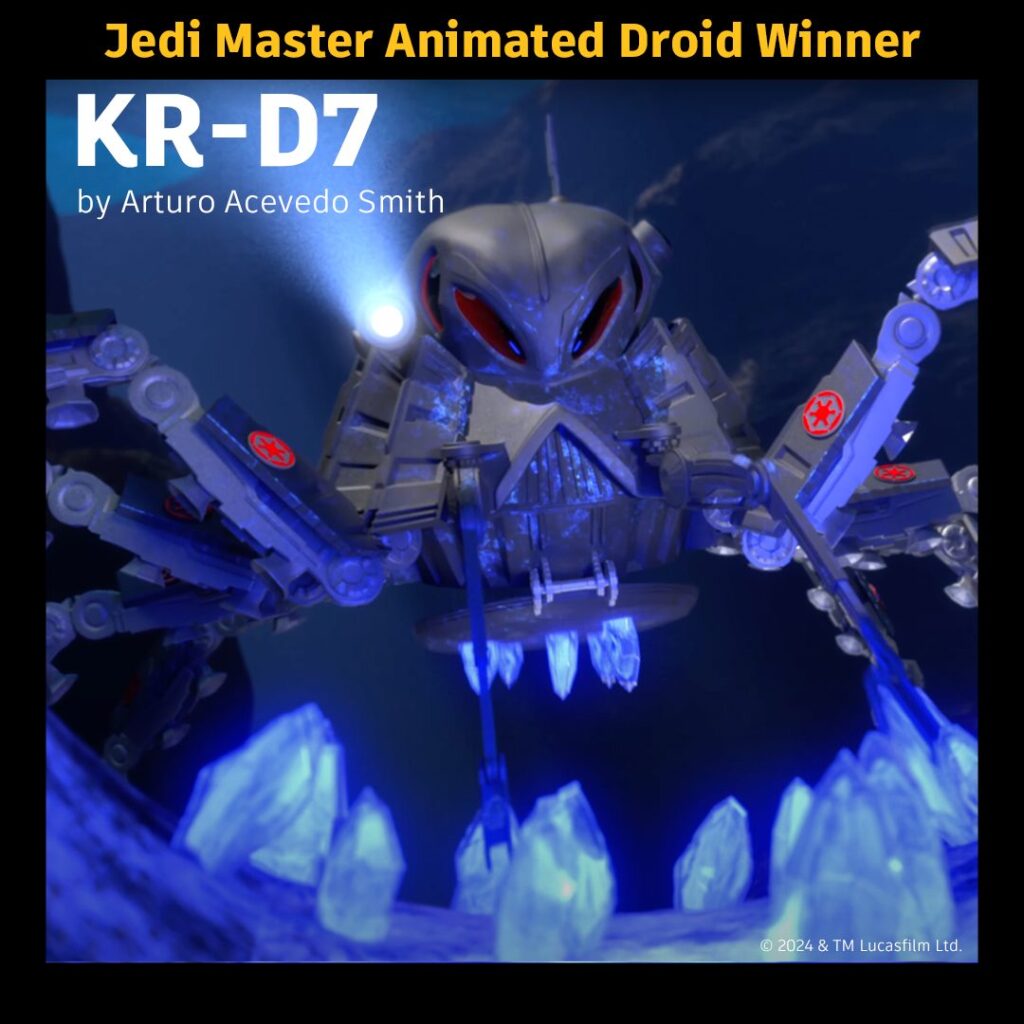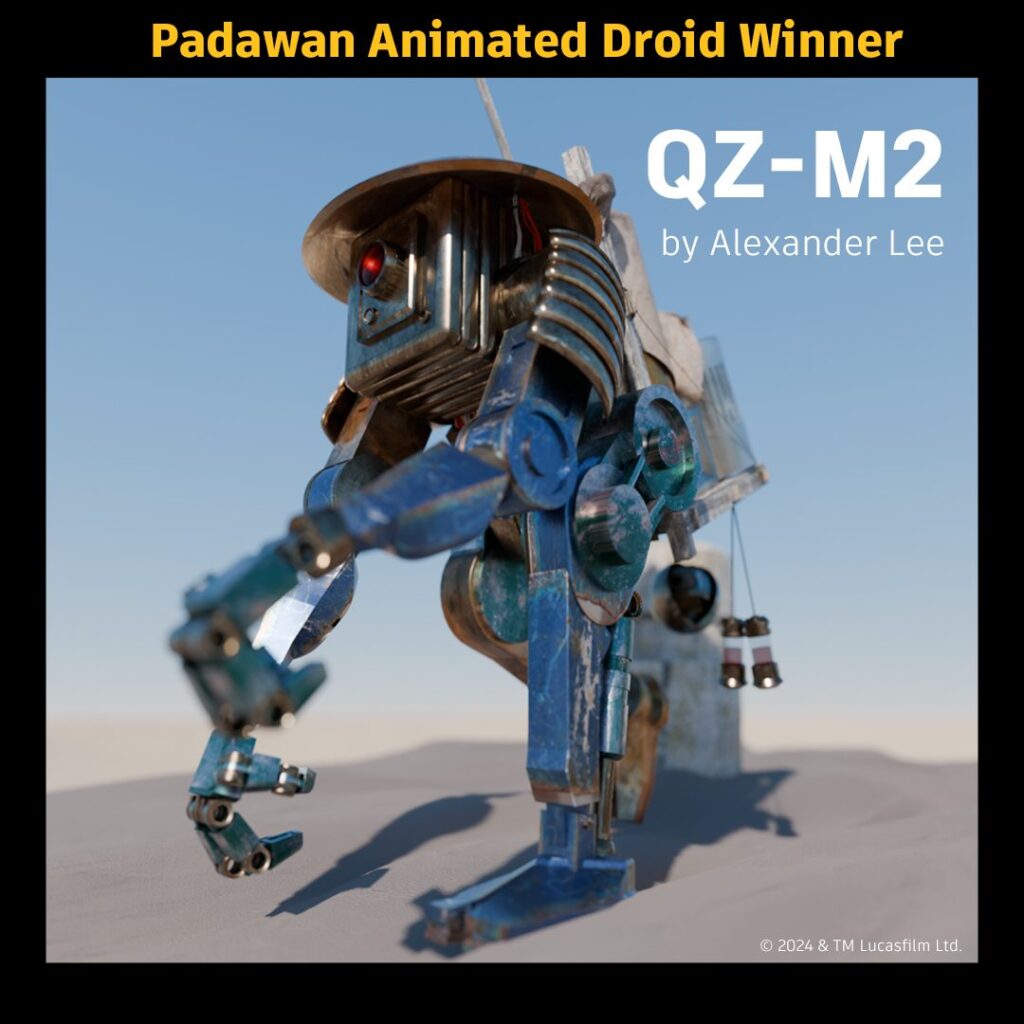
©️2024 & TM Lucasfilm Ltd. Image courtesy of Disney
In May, Autodesk joined forces with Lucasfilm to launch an exciting month-long contest inviting fans to design their own droids inspired by the Star Wars universe. A thrilling celebration of creativity, innovation, and the enduring legacy of Star Wars, the groundbreaking collaboration brought together Star Wars enthusiasts and the talented designers and makers who use Autodesk software, with stunning results.
Not only did the winners design their own droids, but also created compelling back stories that exist within the Star Wars universe and lore. Arturo Acevedo Smith was recognized for the top entry in the “Jedi Master” or professional category and created his animated droid using Maya; Alexander Lee won in the “Padawan” or student category for his animated droid, also built in Maya. These winning designs along with other top selects will be fabricated and showcased at Lucasfilm and Walt Disney Studios.
The entries were judged by an esteemed panel including Neal Scanlan, Oscar Award-winning Creature and Droid Creative Supervisor; Raji Arasu, Executive Vice President, Chief Technology Officer, Autodesk; Pablo Hidalgo, Director, Franchise/Story, Lucasfilm; Evan Atherton, Sr. Principal Research Scientist & Creator of short film Artoo in Love, Autodesk; and Rob Bredow, Academy Award-nominated VFX Supervisor and SVP, Chief Creative Officer, Industrial Light & Magic.
Meet the Winners (and their droids)

“Jedi Master” winner Arturo Acevedo Smith’s amphibious Kyber Raiding Droid KR-D7 was designed and forged by the Dark Lord himself, and seeks and collects Kyber Crystals needed to power the next Death Star throughout the galaxy. A huge Star Wars fan and professional artist, Smith creates fan films for his YouTube channel as a hobby and builds 3D animated reconstructions of surgeries and car accidents for work. When he found out about the May the Fourth competition, he thought it would be a fun and interesting challenge given the short time frame.
“I had a concept in my head, drew a bunch of different droids and ended up fusing different concepts together because I wanted a droid that could transform its shape,” Smith noted. “I like octopuses and spiders, and they have the same number of legs and similar structure, so I came up with a droid that transforms its shape between the two.”
Whatever project he’s working on, Smith credits Maya for enabling him to complete projects end-to-end in a single application. Originally from Mexico City, he first learned Maya in 2012 at USC, where he majored in Film Production and minored in 3D Animation. Now, he uses different tool sets in Maya almost daily. He shared, “I never really specialized in one aspect of CG like many artists do who are either lighters, or shaders, or riggers, or modelers–I have to be able to do everything myself. I enjoy making everything from scratch, and with Maya you can do that. I have the power to model, rig, animate, texture and shade all in Maya. It’s like an unlimited power source for an individual artist who works independently like I do.”

“Padawan” winner Alexander Lee’s QZ-M2: the Hunchback of Niima was designed to assist and guide travelers through the high mountain regions of the planet Phatrong, but has since been thrust into a new life hauling salvage. Lee currently studies Government at Harvard, but has long pursued filmmaking and 3D animation as a hobby. He taught himself Maya using tutorials and YouTube videos so that he could enter the contest, and completed the project from start to finish in 25 days.
Lee is the ultimate Star Wars fan; he made his first stop-motion fan film at the age of seven in his living room using Lego minifigs tied to strings. “Star Wars first got me interested in 3D. I am the biggest Star Wars nerd and I like doing 3D modeling so I figured that I may as well learn how to use Maya,” Lee explained. “The way Maya is laid out is beginner friendly and it’s fairly easy to find what you’re looking for. The rigging in Maya is also really cool.”
At first, Lee drew shapes and silhouettes to hone his creative direction. That led him to creating a spherical, armadillo-like droid, before he shifted towards more of a Pangolin shape with longer arms. For the aesthetics, Lee’s droid was inspired by his grandfather’s antique collection, which includes ancient Japanese farming hats, and Samurai coats and shoulder pads. The droid’s coloring also came from unconventional places. Lee said, “I found a bunch of old copper pots in my mother’s pantry and learned how to make textures in Maya, so all of the parts of the robot that are silver or orange in color are from her pots. I also UV Mapped the rusted edges of an old metal watering can from an antique shop in San Francisco for the edges of the robot arm. I did the same with an old burlap sack that became the fabric on the droid’s back.”
The droid contest was part of Autodesk’s campaign with Lucasfilm to honor the imaginative minds behind the beloved Star Wars franchise. Drawing to a close in June 2024, the contest was a fantastic journey, celebrating the incredible creativity of Star Wars fans and the advanced capabilities of Autodesk software. We thank all participants for their enthusiasm and impressive entries. The latest Star Wars Original series, The Acolyte, is now streaming on Disney+.
Hear from Arturo Acevedo Smith in the upcoming webinar “Creativity in Hyperdrive: Mastering 3D Animation with Efficiency” as he recounts his epic saga of blending creativity with efficiency in the making of KR-D7. He will also share his invaluable insights on overcoming animation challenges like a true “Jedi Master”.
Save your spot for this free webinar!